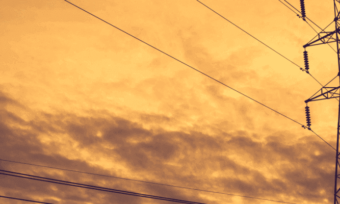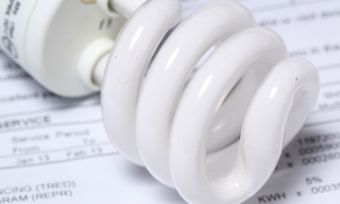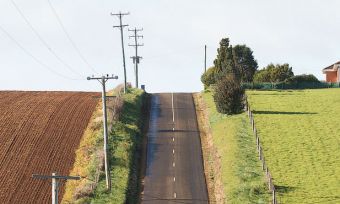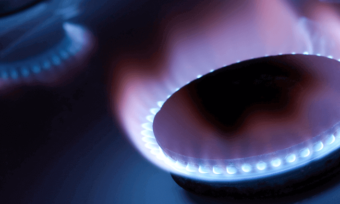What is propane gas?

We’ve all been there — parked up at the servo, waiting for your mum/dad/friend to fill up their car, staring out the window at a stack of grey cylinders in a cage. To some households, propane is a regular guest, but to others, it presents a mystery.
Whether you’re a propane expert or a complete newbie, there’s something to learn about this useful gas. Here at Canstar Blue, we’ll be shining the light on LPG propane and answering all your questions on the matter. Enjoy!
On this page:
What is propane?
Propane is the gas supplied to homes and businesses purchasing LPG in Australia. It is not manufactured specifically for this purpose, but rather as a byproduct of natural gas processing and crude oil refining. It is stored in its liquid form in gas bottles and tanks until it’s needed and released as a vapour. As the vapour is released, the propane transforms into gas.
It may seem confusing, but propane in its natural state has no odour. When bottling LPG, an odourant called ethyl mercaptan is added to the propane for safety reasons. This means that if there’s a leak, you’ll notice the signature ‘gas’ smell.
Another notable feature of LPG propane is that, like other liquids, it expands and contracts with temperature changes. When it’s hot, the propane in your gas bottle will expand. Australian standards ensure that propane bottles are never filled to 100% to avoid over-pressurising the cylinder.
Is LP gas the same as propane??
Technically, LP gas and propane aren’t the same. LPG is the umbrella term for gases that can be liquified. It stands for Liquefied Petroleum Gas — because when stored under pressure, it becomes liquid — and it’s a fuel that may contain a mixture of hydrocarbon gases such as propane, butane and propylene.
That being said, in Australia, the LP gas you buy in cylinders at the petrol station is 100% propane. The only exception is the LPG that powers Autogas cars, which is usually either pure propane or a propane/butane blend.
What is propane gas used for?
There are hundreds, if not thousands, of potential uses for propane. The average Australian may only use propane for domestic heating, cooking, hot water and clothes drying. Here are some other applications for propane outside of the home.
- Leisure activities such as camping, caravanning, boating and recreational vehicle use.
- Industrial and business use for powering steam boilers, kilns and ovens.
- Construction site applications such as forklifts, portable generators and temporary heaters.
- Agricultural purposes such as crop and produce drying, heating greenhouses and irrigation pumps.
- Transport for Autogas.
- Hospitality uses such as powering appliances, heating and outdoor lighting.
What is the difference between propane and LPG?
LPG defines a range of hydrocarbon gases; propane is just one constituent. Put simply, LPG is an umbrella term for a gas that can be propane, butane or isobutane.
The chemical formula of propane (C3H8) is three carbon and eight hydrogen atoms, while butane (C4H10) has four carbon and ten hydrogen atoms. LPG can either be one or the other or a mixture of both.
Why use propane?
There are a few advantages to using propane over other forms of energy. Here are three key benefits of propane.
Easier cooking
On a stovetop, LPG propane has a high heating value, delivering more heat in a shorter time when compared to electric cooktops. Propane stovetops also enable instant heat changes, unlike electric cooktops that require you to wait for elements to heat up or cool down.
Lower carbon footprint
For those concerned about environmental impact, propane is a good solution. Unlike methane, propane is not a greenhouse gas, meaning it’s cleaner-burning than natural gas. Compared to coal, which is burnt for electricity, propane emits significantly less CO2.
Efficiency
Propane, which is supplied in gas cylinders, is a convenient, portable energy source that is simple to store. It’s convenient for regional Australian households without a gas mains connection.
Are propane and natural gas the same?
It is a common misconception that propane and natural gas are the same substance, but they are chemically different. In Australia, LPG is propane (C3H8) and natural gas is methane (CH4). Gas mains or pipes deliver natural gas, and propane is available in gas bottles or tanks.
While propane can be processed into a product called Simulated Natural Gas (SNG) and used as a substitute for natural gas, in their natural states, you can’t substitute one for the other. A propane appliance operates at a different pressure than natural gas appliances. This is because they require different amounts of air to burn. The air-to-gas ratio for natural gas is 10:1, whereas, for propane, it’s 25:1.
Another thing that differentiates propane and natural gas is weight. Natural gas is lighter than air, while propane is heavier. Propane also has a higher energy content, so it uses less gas to generate the same amount of heat.
Is propane or natural gas cheaper?
Generally, natural gas is cheaper per unit than LPG. However, considering natural gas customers pay a supply charge between $300 and $400 a year, the overall costs could work out to be similar. While those receiving propane deliveries also have to pay a service charge, it usually only costs between $40 and $50 a year.
Remember that gas rates and prices are always changing, so it’s important to regularly compare deals to ensure you’re not paying too much.








